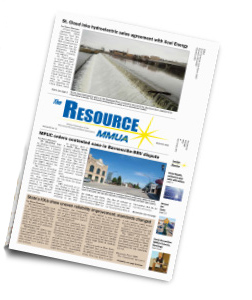
- SINCE 1931
- Cart 0
- Log In
Why Create an Account?
Access members-only information including complete utility directory, salary surveys, discussion forums, legislative updates and more.
Create an Account- Classifieds
- Forum
MISO Report Addresses Grid Reliability in Changing World
MISO Report Addresses Grid Reliability in Changing World
March 16, 2021
A mid-February cold snap revealed weakness in regional electric grids from Texas to the Dakotas and western Minnesota.
How reliable is our region’s grid?
The Midcontinent Independent System Operator (MISO) in February released a report on its Response to the Reliability Imperative. The document is part of MISO’s ongoing four-year initiative to understand the impacts of increasing renewables on the grid.
MISO has concluded that planning and operating the grid becomes more difficult beyond 30 percent of the electric load being served by wind and solar. With proper planning, the report said the region could achieve 50 percent or higher renewable penetration.
MISO is currently operating 25,000 megawatt (MW) of wind energy generation which, in MISO’s most recent 12-month history, generated 12 percent of the electricity mix (with solar contributing less than 1 percent). MISO is preparing for an additional 15,000 MW of renewables (10,000 MW of solar and 5,000 MW of wind) on the system in the next few years.
Emergencies have been increasingly declared by MISO since the summer of 2016. These are not a direct indicator of a reliability, said MISO, but calling them more and in unforeseen hours are evidence of a “changing risk profile.”
The region is changing in big ways
Looking at the marginal cost of energy produced, said MISO, wind and solar are lower cost than coal, nuclear, or natural gas generation. These renewable resources are replacing the region’s conventional baseload resources, which for decades constituted the region’s electric system backbone.
While MISO is policy-neutral on these trends, it has observed significant challenges for the region’s electric system. MISO is responsible to maintain reliability, which it does by addressing energy, capacity, resource adequacy and flexibility.
Each resource type provides a different mix of these capabilities:
- Wind and solar resources are not always available to provide energy during times of need.
- Conventional baseload resources that remain in service can be more prone to outages given their changed usage patterns and maintenance cycles, rendering them potentially unavailable when they are needed most.
- Generation fleet change and extreme weather are increasing risk across the entire year (not just in the summer).
MISO organizes its Reliability Imperative work into four main categories: Market Redefinition; Long Range Transmission Planning; Operations of the Future; and Market System Enhancements.
Market Redefinition
Since the early 2000s, the generation fleet has moved to more renewable resources that are variable and outage risk has expanded beyond the summer months. MISO’s mechanisms must be updated to reflect the changing risk. MISO is in the process of improving emergency and scarcity prices to more accurately convey system conditions and ensure reliability.
Long Range Transmission Planning
“If you love renewables you’d better love transmission,” the report quoted MISO Chief Executive Officer John Bear as saying.
Additional transmission is crucial to support the continued growth of large-scale wind and solar, since those resources are often located far from load centers.
Retirement of conventional generation as intermittent renewables continue to grow poses significant challenges to the reliability of the transmission system in the MISO region.
The business case should reflect the need for transmission to ensure reliability of the system. MISO and stakeholders will adjust existing or develop new cost-allocation methods. The Organization of MISO States (OMS), which represents our state regulatory agencies, is working on this.
Operations of the Future
The shift to more weather-dependent, intermittent renewables and distributed resources means that system peaks and operating risks are becoming less obvious and more difficult to manage in day-to-day operations.
To effectively manage both wholesale and retail connected resources, MISO envisions the development and use of artificial intelligence, machine learning and advanced analytics.
Market system enhancements
A new flexible architecture and analysis is needed to support an evolving resource mix and future market processes.
Conclusion:
As an independent, Federal Energy Regulatory Commission-approved system operator, MISO is responsible for the reliability of the Bulk Electric System and has the authority to act.
But the responsibility for reliability is shared. Investor-owned utilities, electric cooperatives, and municipal utilities serve customers and own the region’s transmission lines, generating units, and other infrastructure. State regulatory agencies often oversee how load-serving entities carry out their responsibilities.
Not every proposal and initiative in the report will be supported by every one of MISO’s stakeholders, said MISO. But the Reliability Imperative warrants an immediate response.
The time to act is now.
- report by Steve Downer
Hometown Connections Helps MMUA Members
 Hometown Connections is an American Public Power Association subsidiary that provides products and services designed to help municipal utilities meet today's new and pressing industry challenges. MMUA is a Hometown Connections Affiliate.
Hometown Connections is an American Public Power Association subsidiary that provides products and services designed to help municipal utilities meet today's new and pressing industry challenges. MMUA is a Hometown Connections Affiliate.
For information on AMI, operations, cyber-security, business strategy, customer care, finance and workforce issues, click on the Hometown Connections logo!
Events
Sponsors

73% of our municipal
electric utilities have
successfully operated
for 100 years or more.


